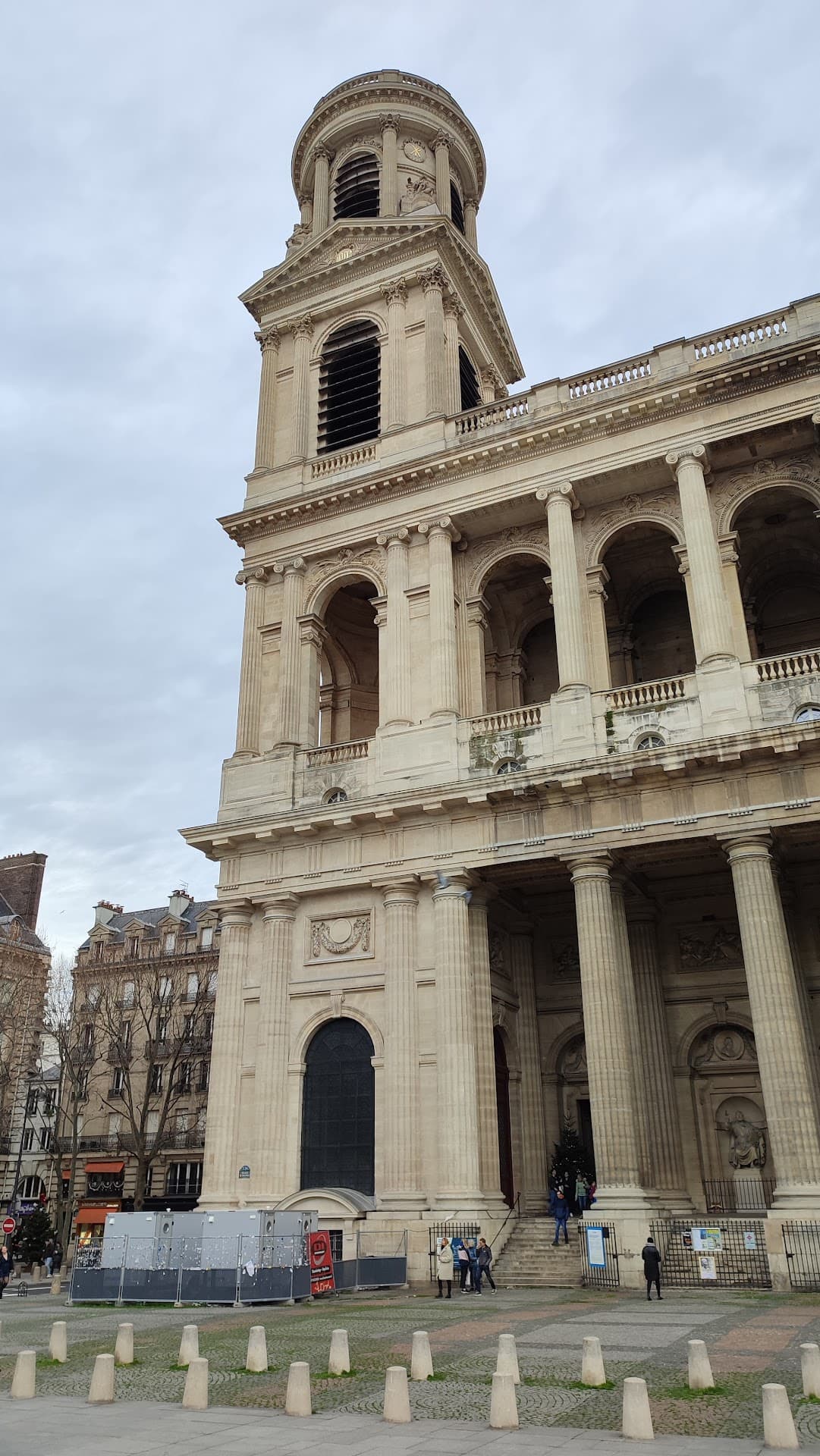Audio GuideÉglise Saint-Sulpice
17th-century Roman Catholic place of worship with an ornate facade & naturally lit painted dome.
Saint-Sulpice Church is a prominent landmark in Paris, celebrated for its harmonious blend of spiritual, artistic, and historical elements. Constructed in the mid-eighteenth century to replace a former Romanesque church, it spans several centuries and boasts both Baroque and Neoclassical architectural styles. The striking west façade, initially designed by Giovanni Servandoni and later enhanced by Jean Chalgrin, is noted for its large arched windows and two distinct towers, offering a unique and contemplative appearance.
Upon entering, visitors encounter grand holy water basins, gifts from the Venetian Republic to King Francis I. The sacred interior is adorned with notable sculptures by acclaimed artists, including works by Jean-Baptiste Pigalle. The Lady Chapel features a striking white marble statue of Mary and a dome naturally illuminated, embellished with a fresco by François Lemoyne, contributing to the church's tranquil beauty.
One distinctive feature is the historical gnomon, a scientific meridian line from the eighteenth century used for tracking equinoxes and calculating the date of Easter. The church also houses the Great Organ, a remarkable creation by Aristide Cavaillé-Coll, which resonates with inspiring music during regular Sunday performances.
Over the years, Saint-Sulpice has welcomed many distinguished figures and is known for significant baptisms, such as those of the Marquis de Sade and Charles Baudelaire, and it was the wedding venue for Victor Hugo. The church has withstood challenging times like the French Revolution and the Paris Commune and has become part of cultural works, including The Da Vinci Code.
Today, Saint-Sulpice remains a vital cultural landmark, inviting those who cherish history, art, and Parisian heritage to immerse themselves in its enchanting atmosphere.




